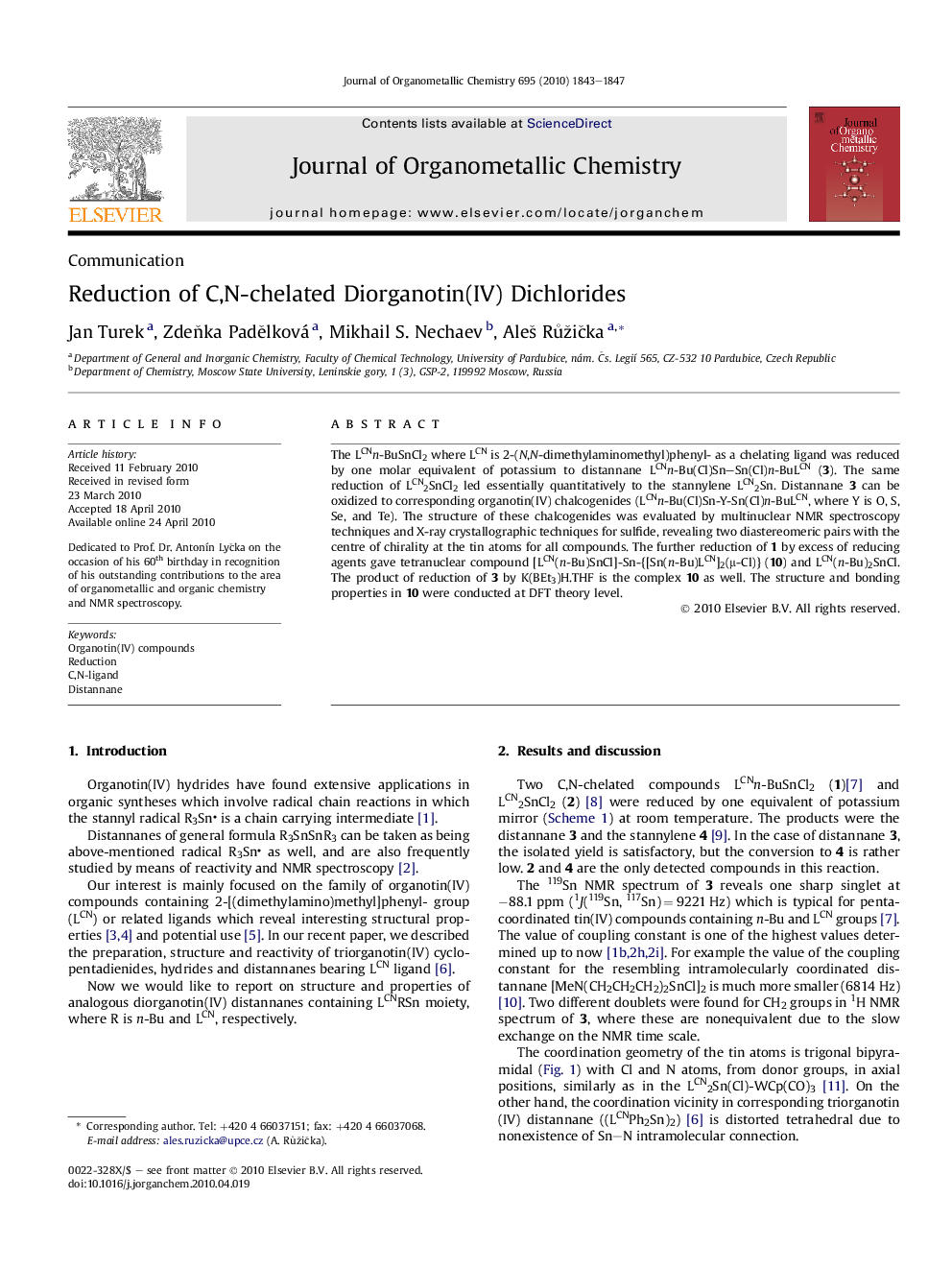| Article ID | Journal | Published Year | Pages | File Type |
|---|---|---|---|---|
| 1325718 | Journal of Organometallic Chemistry | 2010 | 5 Pages |
The LCNn-BuSnCl2 where LCN is 2-(N,N-dimethylaminomethyl)phenyl- as a chelating ligand was reduced by one molar equivalent of potassium to distannane LCNn-Bu(Cl)Sn–Sn(Cl)n-BuLCN (3). The same reduction of LCN2SnCl2 led essentially quantitatively to the stannylene LCN2Sn. Distannane 3 can be oxidized to corresponding organotin(IV) chalcogenides (LCNn-Bu(Cl)Sn-Y-Sn(Cl)n-BuLCN, where Y is O, S, Se, and Te). The structure of these chalcogenides was evaluated by multinuclear NMR spectroscopy techniques and X-ray crystallographic techniques for sulfide, revealing two diastereomeric pairs with the centre of chirality at the tin atoms for all compounds. The further reduction of 1 by excess of reducing agents gave tetranuclear compound [LCN(n-Bu)SnCl]-Sn-{[Sn(n-Bu)LCN]2(μ-Cl)} (10) and LCN(n-Bu)2SnCl. The product of reduction of 3 by K(BEt3)H.THF is the complex 10 as well. The structure and bonding properties in 10 were conducted at DFT theory level.
Graphical abstractThe reactivity of a C,N-chelated diorganotin(IV) dichlorides with various reducing agents has been studied.Figure optionsDownload full-size imageDownload as PowerPoint slide
